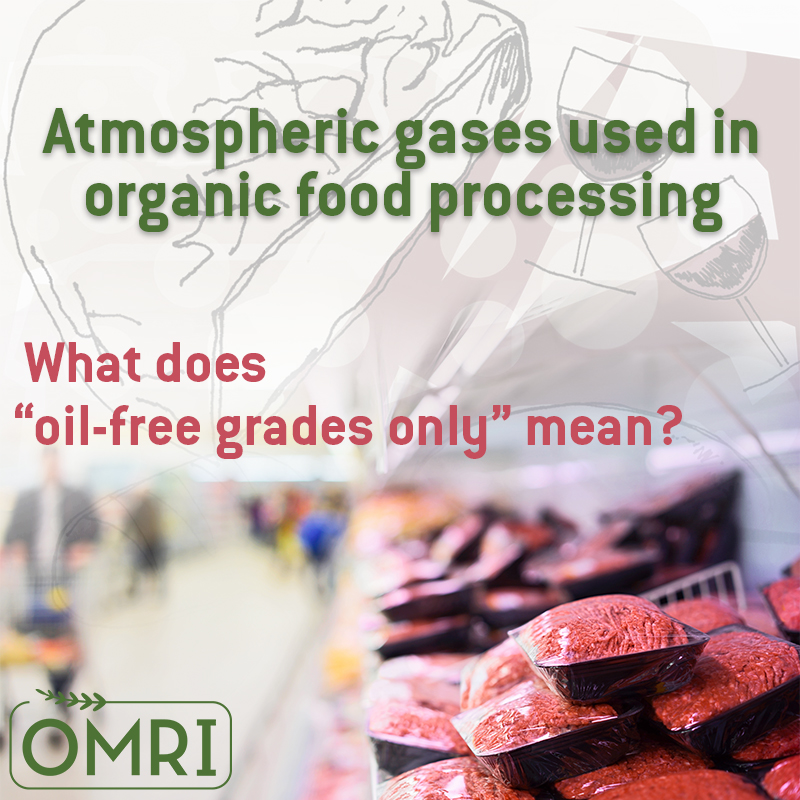
Looking for complete background information on a particular topic? You’ve come to the right place!
Browse OMRI’s articles, or contact us to suggest a topic. Don’t forget that subscribers receive the complete OMRI newsletter with the latest reports, delivered quarterly.
 Do carriers in probiotics that are fed to livestock need to be certified organic under the Canadian regulations?
Do carriers in probiotics that are fed to livestock need to be certified organic under the Canadian regulations?
By Sarah Peters
Carriers are substances, both agricultural (e.g., wheat bran) and nonagricultural (e.g., diatomaceous earth), used to deliver specific livestock feed materials to animals. By design, carriers are present in the input material...
 How can I interpret restrictions for a potting soil when it’s listed in two categories?
How can I interpret restrictions for a potting soil when it’s listed in two categories?
By Jennifer Christie
To organic producers and certifiers, an input’s OMRI Listed® seal and certificate indicate that the product has undergone a rigorous independent review process. Understanding how to interpret an OMRI...
 I know the National Organic Program (NOP) rule allows liquid fish and liquid squid products to be pH adjusted with some acids. What are the standards for using synthetic acids in liquid fish and squid products?
I know the National Organic Program (NOP) rule allows liquid fish and liquid squid products to be pH adjusted with some acids. What are the standards for using synthetic acids in liquid fish and squid products?
By Amber Lippert
NOP §§205.601(j)(8) and 205.601(10) state that liquid fish products and liquid squid products, respectively, can be pH adjusted using...
I’ve been puzzled by what is meant about “oil-free grades” for the atmospheric gases oxygen and nitrogen. Why are those annotations there, and how does one verify if there is an oil-free grade?
The U.S. organic rules permit the use of nitrogen and oxygen gases in organic food processing, but places a restriction on their origin to “oil-free grades” only. Older...
 Can hydrated sodium calcium aluminosilicate or silicon dioxide be used as a treatment to reduce aflatoxins in feed?
Can hydrated sodium calcium aluminosilicate or silicon dioxide be used as a treatment to reduce aflatoxins in feed?
By Brian Baker
If the material is nonsynthetic, then yes. Otherwise, no.
The use of mycotoxin binders or adsorbants in feed can reduce toxic substances produced by Aspergillus spp. and related fungi harmful to livestock. Hydrated sodium calcium aluminosilicate...
 What is the status of pelargonic acid? Can it be used as an herbicidal soap in organic production?
What is the status of pelargonic acid? Can it be used as an herbicidal soap in organic production?
By Brian Baker
Pelargonic acid, also known as nonanoic acid, occurs naturally in many animals and plants, including geranium (Pelargonium spp.). Commercially, however, pelargonic acid is manufactured using a synthetic process; to produce the active ingredient, various sources of fats...
 Are all calcium phosphate fertilizers allowed in organic production?
Are all calcium phosphate fertilizers allowed in organic production?
By Brian Baker
No, calcium phosphate’s allowance in organic farming depends on its source and manufacturing. Calcium phosphate comes in mono-, di- and tricalcium forms. Tricalcium phosphate is usually natural and allowed when derived from phosphate rock or bone meal....
Is hydrogenated corn oil allowed as a pesticide inert?
By Katherine Rola
Both organic and conventional agricultural practices utilize pesticides to prevent damage and losses due to...
Is polyvinyl acetate allowed as a wood treatment?
By Jacky Castañeda
The Federal Insecticide, Fungicide and Rodenticide Act (FIFRA) defines an inert ingredient in a pesticidal product as “an ingredient which is not active.” USDA National Organic Program (NOP) regulations follow this definition when considering products formulated as pesticides. While the definition is simple and any number of ingredients may be defined by this classification, limitations exist, especially when dealing with synthetic substances....
What is the purpose of celery powder in organic processing?
By Johanna Mirenda
Celery powder is listed in §205.606 of the National List, indicating that nonorganic sources are allowed for use in organic processing only when the material is not commercially available in organic form. The manufacturing process for celery powder is fairly simple. Celery is harvested, cleaned, macerated and blanched. The insoluble solids are separated from the liquid and then concentrated, heated and dried. Celery powder is not typically...








